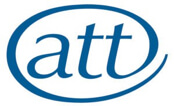Considering the impact of APR/BPR changes on wills: Where there’s a will there’s a way
What’s the point of having a will? As in, a Last Will and Testament.
It’s to do your bidding with your assets when you die. It’s to make sure that the things you leave behind go to the people you want them to – whether that’s to your spouse, your children or to a charity, for example. Put another way, if you will, the purpose of a will is to carry out your will. Without a Last Will and Testament, your assets will be distributed in accordance with the intestacy rules, so it’s really important to have one in place.
Tax is always an important consideration when wills are drafted. If there is a large Inheritance Tax liability on your death, your beneficiaries will obviously receive less value from your estate because the tax will need to be paid before the assets are distributed. A tax-efficient will should therefore be drafted in a way that enables any available tax reliefs to be claimed, in accordance with the prevailing tax rules.
But tax rules change. And when they change, it might mean that you need to update your will to make sure that you are still claiming any available tax reliefs in the most tax-efficient way.
Changes to the APR and BPR rules and the impact on wills
This is particularly true for people who are planning to claim Agricultural Property Relief (APR) or Business Property Relief (BPR) on their death estate, following the changes announced in the Autumn Budget last year.
APR and BPR are types of Inheritance Tax reliefs which can significantly reduce the value of a person’s estate on their death. Broadly, 100% BPR is available for shares in an unquoted company and/or an interest in a partnership, provided that it carries on a business which is mainly trading. APR is generally available for assets that are occupied for agricultural purposes. Other conditions also apply.
Until the Autumn Budget in October last year, there was no cap on the amount of APR or BPR that a person could claim. Provided that the assets fully qualified for 100% relief, no Inheritance Tax would be payable on those assets on death.
However, the Autumn Budget announced that a new £1M cap would be introduced for APR and BPR assets with effect from 6 April 2026. The £1M cap is a combined allowance for APR and BPR assets, and, crucially, it is not transferable between spouses. The new £1M cap will also apply to gifts made on or after 30 October 2024, where the donor dies within seven years but after 6 April 2026.
What’s the problem?
In recent years, wills for married couples wishing to claim APR and/or BPR have often looked like this:
Everything is left to the surviving spouse on death of the first spouse. On the death of the second spouse, everything is left to the children.
This was tax efficient because on the death of the first spouse, whilst there was no Inheritance Tax on death (due to the ‘spouse exemption’ rules, which have not changed), there was also no loss of APR/BPR relief. The surviving spouse could therefore give all the assets to the children on their own death (or during their lifetime) and still claim full APR/BPR relief.
However, from 6 April 2026, whilst the spouse exemption will still apply on first death, on the second death the surviving spouse will only have their own £1M allowance to use against all the APR/BPR assets. The opportunity to use the £1M allowance of the first spouse to die will be lost if the wills stay the same, giving rise to an extra £200,000 Inheritance Tax liability on second death.
Or, sometimes, wills for married couples have looked like this:
Everything qualifying for 100% APR/BPR is left to a trust on the death of the first spouse. The surviving spouse is then a beneficiary of the trust and is able to benefit from the assets held within the trust, along with the children. When the surviving spouse dies, the trust can either continue or be wound up.
This was tax efficient because the assets would fully qualify for 100% APR/BPR on first death and could be transferred into trust tax-free. One big advantage of this option was to ‘bank’ APR/BPR relief on first death to protect the estate should the legislation change or should the assets cease to qualify before the death of the surviving spouse.
However, from 6 April 2026, any APR/BPR assets over the £1M allowance will suffer an Inheritance Tax charge on transfer to the trust. So, whilst a trust could still potentially be used to protect the first £1M of qualifying assets, anything above that limit should be carefully considered. The surviving spouse should hold sufficient assets to ensure that they are able to use their own £1M APR/BPR allowance.
What’s the solution?
For spouses holding assets qualifying for APR and BPR, action should be taken to:
- Make sure that assets are balanced between spouses to make sure that you are both able to make use of your £1M allowances.
- Check your wills – if everything is left to the surviving spouse or to a trust on first death, speak to your tax adviser and consider revising your wills.
They say that where there’s a will, there’s a way. Just make sure yours is still working in the way you want it to and doesn’t, accidentally, go against your will.
Disclaimer
As the new rules don’t come into force until 6 April 2026, changing your wills right now might be slightly premature. However, it may be possible to word your wills in a way that covers your position both before and after April 2026 (for example, by bequeathing sufficient qualifying property to a trust so as to make use of allowances, without giving rise to Inheritance Tax liabilities). We also note that it is possible the government could change the rules to permit the £1M allowance to be transferable between spouses either by the time the legislation is adopted or by a tweak to the rules in the future.
This article is from the latest edition of our Agricultural Briefing. To receive future copies of any of our newsletters directly to your inbox, please visit our preference centre to register your interest.
If you have any questions about the above, or would like more information specific to your circumstances, please enter your email address below and we will get in touch:
















